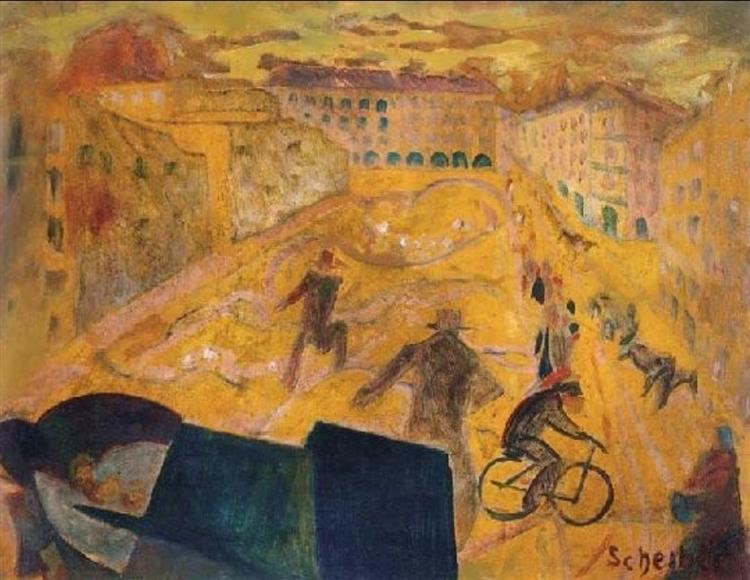Description
Contemplating "Városi Forgatag" by Hugó Scheiber is to immerse himself in a vibrant and dynamic urban whirlwind that captures the frantic essence of life in the city in the early twentieth century. The work, whose translation of the Hungarian is "urban crowd", is erected as a testimony of Scheiber's own spirit, who was a remarkable exponent of futurism in Hungary.
The painting, with its undulating lines and its fragmented composition, reflects the influence of Viennese futurism and expressionism. Scheiber manages to transmit the speed and movement that characterize urban life through the masterful use of abstract forms and intense colors. Curvilinear contours and acute angles are intertwined in a chaotic dance, symbolizing the bustle and incessant energy of the city.
An "Városi Forgatag" analysis reveals Scheiber's mastery in color manipulation. The palette used is rich and varied, predominantly vibrant tones of red, blue and green, which encapsulate the intensity and vivacity of the urban environment. These colors, combined with bold contrasts, create an almost electric atmosphere, immersing the viewer in an intense sensory experience.
The representation of stylized and almost ghostic, dispersed human figures throughout the composition is also remarkable. These figures, far from being realistic representations, are abstract and suggestive, rather evoking the essence of the individual in the middle of the crowd. The way in which Scheiber plays with the duality of presence-adaptation of these figures add a layer of complexity to the work, suggesting the alienation and at the same time the integration of the individual into the collective tide of the city.
Scheiber, born in Budapest in 1873, was an artist who experienced with various currents and styles, although his work is predominantly associated with futurism and expressionism. These artistic movements, which arose at the beginning of the 20th century, focused on issues of modernity, speed, technology and the social changes caused by the industrial revolution. "Városi Forgatag" embodies these ideals, making use of a futuristic aesthetic to represent a city that never sleeps and is constantly moving.
In addition to futurism, the influence of expressionism in Scheiber's work is palpable. Expressionism is characterized by the representation of subjective experiences and intense emotions, often through the distortion of physical reality. In "Városi Forgatag", this influence is manifested in the way in which the artist distorts and multiplies forms and figures, creating a feeling of dynamism and emotional tension that transcends the mere visual representation.
In the context of his time, Scheiber was contemporary of other great artists of the futuristic movement, such as Umberto Boccioni and Giacomo Balla. However, while Italian futurists focused mainly on the glorification of technology and progress, Scheiber did not lose sight of the human and emotional aspect within their compositions. This more balanced and deep approach contributes to the uniqueness of his work in the artistic panorama of the first half of the twentieth century.
In conclusion, "Városi Forgatag" by Hugó Scheiber is not only a masterful representation of contemporary urban life of his time, but also a compendium of the artistic and social currents of his time. Through its bold use of color, shape and composition, Scheiber manages to capture both the vibrant energy of the city and the emotional experiences of its inhabitants. It is a work that, when observing it, is not only seen, but it feels, establishing a deep and lasting connection between art and the spectator.
KUADROS ©, a famous paint on your wall.
Hand-made oil painting reproductions, with the quality of professional artists and the distinctive seal of KUADROS ©.
Art reproduction service with satisfaction guarantee. If you are not completely satisfied with the replica of your painting, we refund your money 100%.

